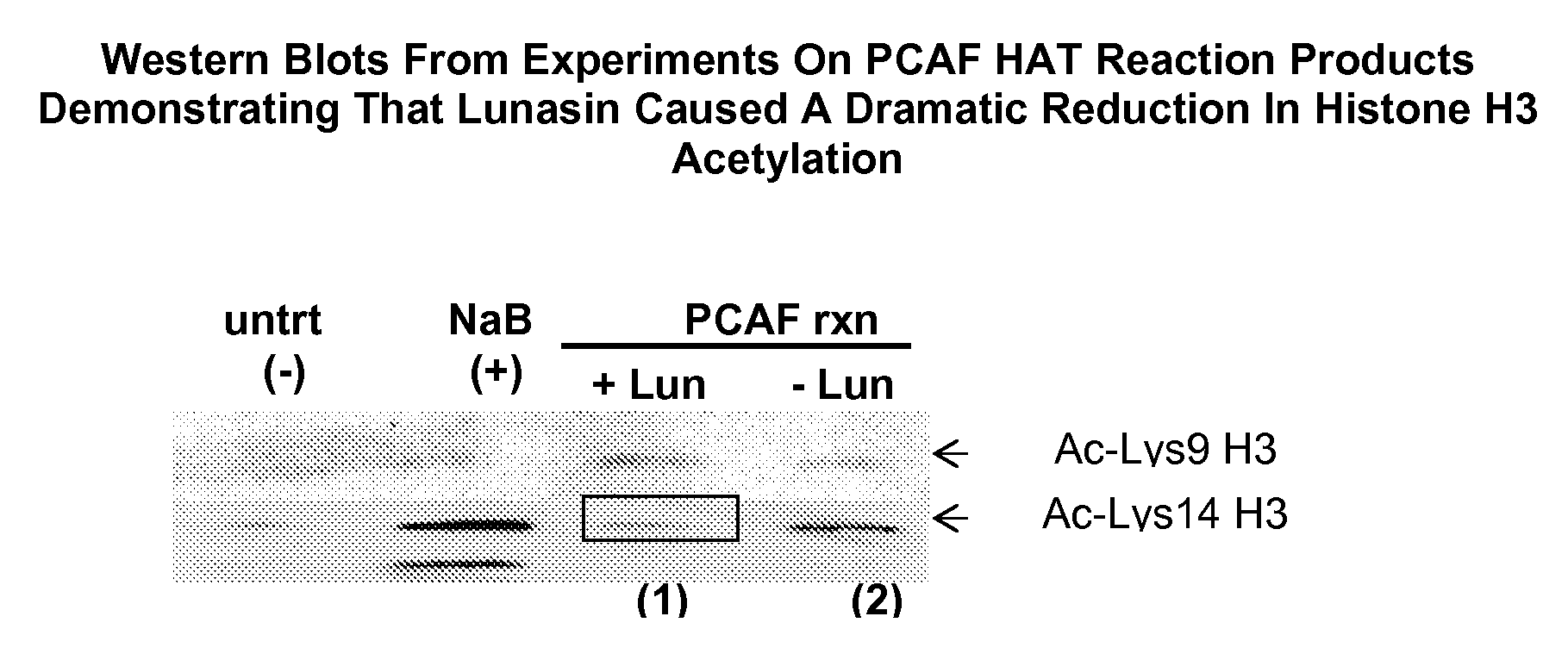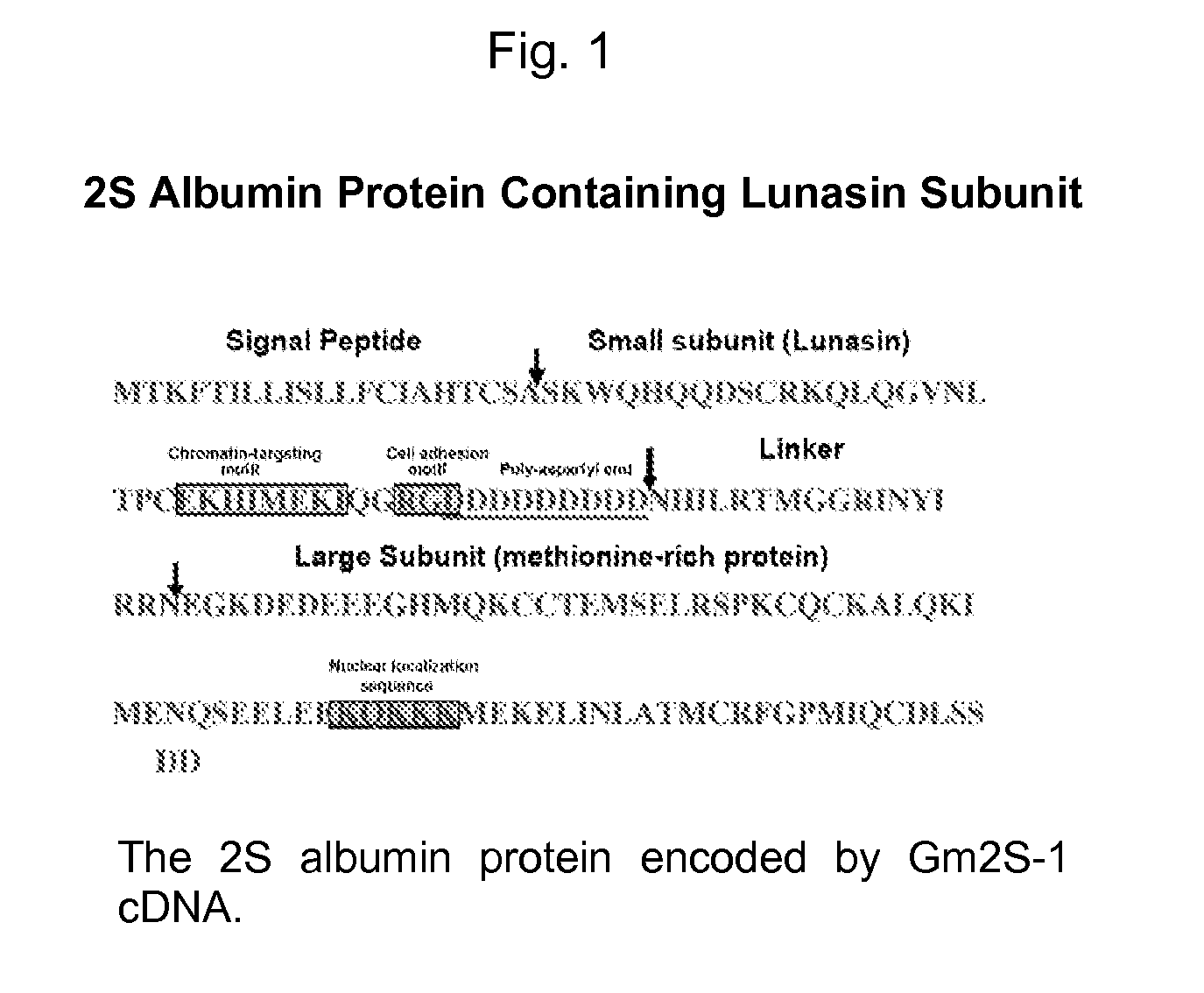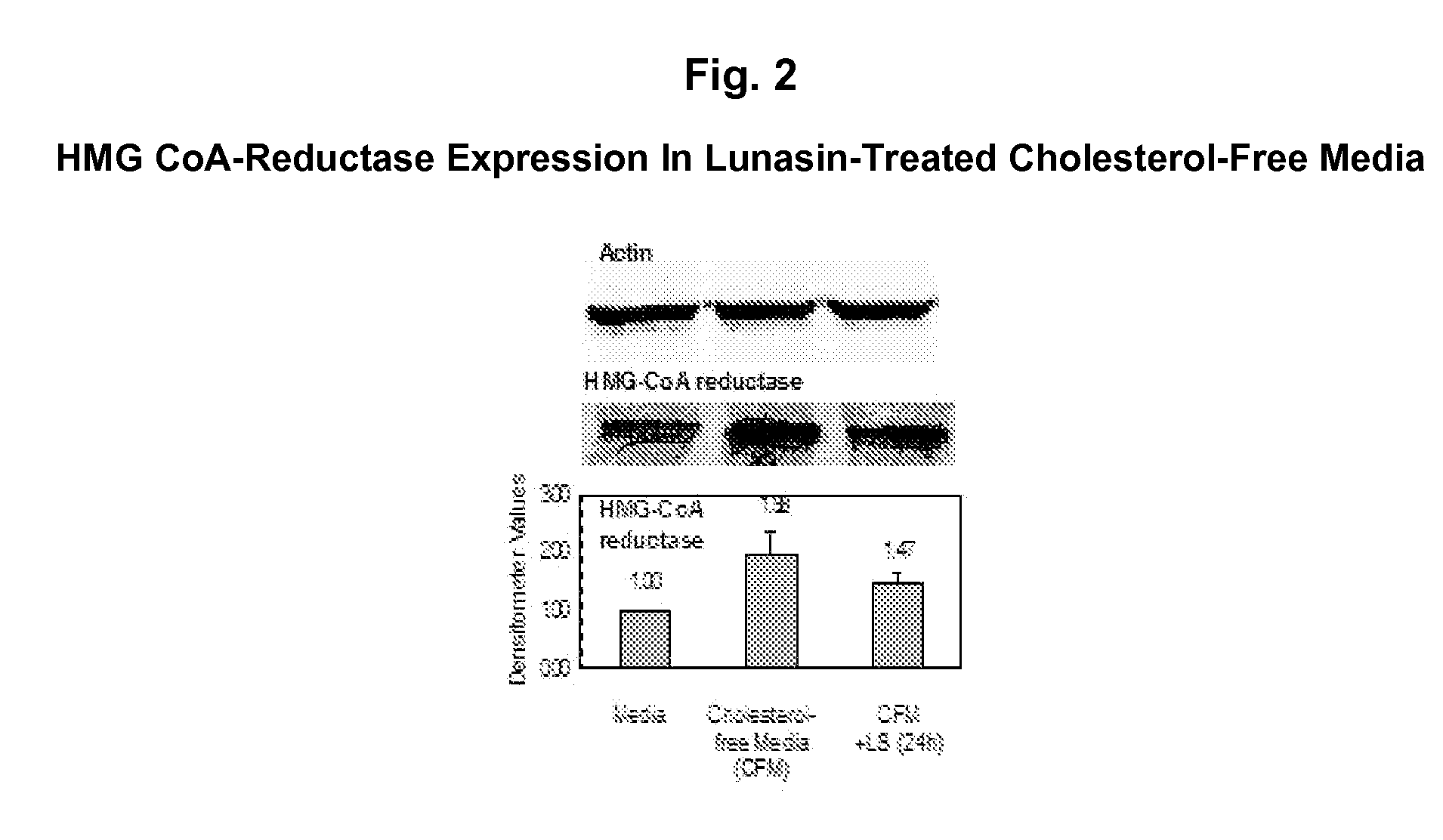Methods for using soy peptides to inhibit h3 acetylation, reduce expression of hmg coa reductase, and increase ldl receptor and sp1 expression in a mammal
a technology of soy peptides and h3 acetylation, which is applied in the field of peptides, can solve the problems of no known effective method of safely inhibiting h3 acetylation
- Summary
- Abstract
- Description
- Claims
- Application Information
AI Technical Summary
Benefits of technology
Problems solved by technology
Method used
Image
Examples
Embodiment Construction
[0022]Lunasin (a.k.a. lunastatin) is a recently discovered bioactive component in soy with a novel chromatin-binding property and epigenetic effects on gene expression (17, 18). The lunasin soy peptide is heat stable, water soluble and found in significant amounts in select soy protein preparations (19). Studies show that it can get inside mammalian epithelial cells through its RGD cell adhesion motif, bind preferentially to deacetylated histones and inhibit histone H3 and H4 acetylation (20). There is growing evidence that cellular transformation, responses to hormones and dietary and environmental effects involve epigenetic changes in gene expression, which are modulated by the reversible processes of DNA methylation-demethylation and histone acetylation-deacetylation (21, 22). Lunasin is the first natural substance to be identified as a histone acetylase inhibitor, although it does not directly affect the histone acetylase enzyme. It inhibits H3 and H4 acetylation by binding to s...
PUM
 Login to View More
Login to View More Abstract
Description
Claims
Application Information
 Login to View More
Login to View More - R&D
- Intellectual Property
- Life Sciences
- Materials
- Tech Scout
- Unparalleled Data Quality
- Higher Quality Content
- 60% Fewer Hallucinations
Browse by: Latest US Patents, China's latest patents, Technical Efficacy Thesaurus, Application Domain, Technology Topic, Popular Technical Reports.
© 2025 PatSnap. All rights reserved.Legal|Privacy policy|Modern Slavery Act Transparency Statement|Sitemap|About US| Contact US: help@patsnap.com



